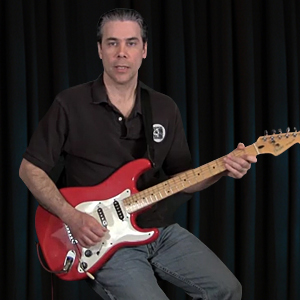- Changing Strings: Introduction
- Cleaning The Strings, Neck & Body
- Removing Electric Strings
- Putting On Electric Strings
- Stretching & Tuning Electric Strings
- Changing One Acoustic String
- Changing More Acoustic Strings
- Stretching & Tuning Acoustic Strings
- Removing Classical Nylon Strings
- Putting On Classical Nylon Strings
- Stretching & Tuning Classical Strings
- Maintenance Advice & Summary
Stretching & Tuning Electric Strings
After you have the new set of strings on then it's time to check the bridge parts (saddles if it's a Fender style) to see if anything was knocked out of alignment while changing the strings.
Next, stretch the strings because there is going to be some slack and looseness in the windings. After that you are ready to start tuning with your tuner. Be prepared to stretch, tune then re-stretch and retune several times before your new strings will stay solidly in tune. Most importantly, tune up, not down!
This is also a good time to check the action (the distance from the string to the frets) and the intonation. After putting on new strings is the best time to set the intonation. Tune the open string and check to make sure it's in tune using the 12th fret natural harmonic. Play the note at the 12th fret. If it is too sharp, then bridge saddle needs to be moved back to lengthen the string. If it's too flat, then the saddle needs to be moved forward toward the bridge to shorten the string.
